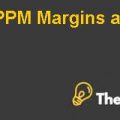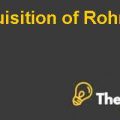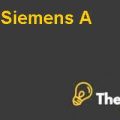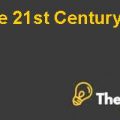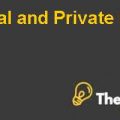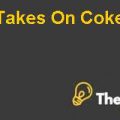UBER Technologies Inc. Case Study Analysis
Threats of Substitutions
Being a part of transportation there are many substitutions in comparison for uber. This strategy will also produce a threat to an organization. Substitutions like taxi, auto rickshaws and local busses which costs almost less than half of the uber rates can also decline the uber market. The fear of facing a competitive environment is very basic for any bigger organization like uber. There are many of the competition that can copy the concepts and provide the same services as the uber is providing to its customers. Focusing on the taxi services they are the biggest competitors for the company as they offer the same services just the difference is that people need to find stops for taking a taxi but uber can arrive at their instant location. However, taxi services are well-known to the individuals more than uber and are more efficient as the customers love to bargain and this policy is not available if one will take an uber.
Another benefit of the taxi is that if the person stuck in some unusual traffic the passenger will pay the decided fair but in case of the uber the passenger has to pay an additional charge as per the rules set by the company.
Supplier Bargain Power
Supplier bargaining power in the transportation industry is the lack of drivers as the company doesn’t own vehicles and this has become some major threat. As per the rules of the company the business model includes the drivers owing their cars or renting them from any firm. One of the biggest challenges for the company is that the drivers can work for the rival company as well.
Threats of Buyers
The variety of certain individuals can affect the company’s strength by minimizing the prices of the products and services. Overviewing the market it is very much clear that the rival companies are also making progress by pointing the weak point of any organization. As the uber is application software and can be accessed easily it provides just tap to logout from the application and many similar applications have been introduced in the markets so the customers can easily switch their choices which will not disturb their desired cost figure. A massive increase in the number of private cars has made a uber less valuable as the people prefer traveling on their private vehicles rather than choosing an alternate hired vehicle from uber. Considering these cases the ultimate power of the buyers bargaining has minimizes the amount of income of the firm.
Degree of Rivalry
The degree of rivalry has increased over several years. The industry has become more powerful and even more market competitive with suppliers and customers. The company has to maintain its cost as the rivalry organizations are always there to interrupt their costing policy. They can attract the firm’s customers easily by only minimizing their rates. (allan, 2017)
Business Model:
Uber is a software-based program whose business strategy is to attract individuals who are willing to travel around with minimum costs fixed by the company. This software has created a link between both the driver and the customer where the customer feels easy to travel and then with help of the application they can rate driver’s performances which will help the organizations to provide wages to the most deserved employee. It is a smartphone application that provides services on the demand of customers. The process for using an uber is very simple as downloading an application and registering and then you are free to use the application.
Driving
Anyone with a driving license can work for uber as a freelancer. As uber provides a platform for anyone willing to work with motivations. Uber gives benefits to its drivers on completing the fixed level of rides per day.
Passengers
Passengers can easily book a ride by locating themselves on the application and the application then show them the available rides.
Fares
The fares are mentioned on the application by which a passenger can decide whether they want to book a ride in those fares or not. Uber provides the most economical fares but they deal with the concept of “demand of law” which says the higher the demands the higher the prices. This increases the profit margin of the firm.
Growth
Uber is growing rapidly as it is promoting itself on a higher basis on social sites or by providing discounts in the form of promo codes that will surely attract the passengers as well as drivers.
Availability
Uber is accessing in the various areas so it is the most reliable ride and it provides a link between both the passengers and the driver which will provide benefit to them like they can contact each other in order of any miss guidance of the location From the above table of VRIO analysis, it is concluded as the aboriginal service of the uber organization is a competitive advantage whereas the customer’s loyalty can be imitable but is rare and valuable. The service quality is not rare but the accessibility ratio is on average.
Shareholder Value Creation:
In the sharing economy market, the creation of value for shareholders is considered as a key factor for the achievement of long-term success. Thus, the assessment of Uber Technologies Inc. shareholder value creation has been significantly assessed for the measurement of its performance in the industry.
Earnings per Share (EPS):
The basic earnings per share of the organization declined from 0.000002 to -0.000005 dollars per share. This primarily represents the availability of a few earnings for each investor and shareholder of the organization and considered it less valuable.
The return on equity of the organization had increased to -57% in the year 2019 from -14% in the year 2018. The declinein the return on equity represents the fact that the organization has an income of the organization had declined to a lower level and is becoming inefficient at to increase the shareholder value and to maximize the profits. The reason fora lower return on equity as compared to 2018 is the decline in shareholder’s equity of (7385) US dollars and a decline of $ 997 US dollars in Net income.
Dividend per Share (DPS):
The dividend per share decreased to -0.000000008US dollars per share in the year 2019 from 0 US dollars per share in the year 2018. This mainly represents thenegative cash flow position and inefficient organizational performance in the sharing economy marketensuring the fact that the shareholders of the organization do not follow stable dividend policy. However, the increase in dividend might indicate that the organization is raising its dividends to attract additional equity investors to finance the aggressive growth and expansion strategy of the organization.
Shareholder Value Added (SVA):
The shareholder value-added performance measure is used for the analysis of the efficacy of the management and profitability of the organization. The performance measure is considered important for the evaluation of whether the shareholder value is added or not i.e. company’s profits have exceeded the overall cost. It was thus evaluated that Uber created shareholder value worth 684million US dollars which indicates that the organization outperforms the expectation of its shareholders.
However, the organization created significantly less value as compared to last year as shareholder value worth -562 million US dollars was created in 2018. The reason for less value created is due to the decline of -2880 million US dollars in the net income and investments in total assets.
The shareholder value added is calculated by deducting the cost of capital from the net operating profit after tax. The cost average cost of capital is calculated using the current weighted of capital of 9.5% ad multiplying the difference of total; assets and current liabilities by the weighted average cost of capital. (CHEN, 2020)
Dividend Yield:
The dividend yield decreased from 0 percent to -0.00000002% percent from the year 2018 to 2019. This is primarily assumed due to the increase in the share price of the Uber.
Total Shareholder Return and Value Creation:
The evaluation that the total shareholder return of 0 percent was achieved in the year 2019 which is calculated using a dividend yield of -0.00000002%percent. Also, the value created for shareholders was estimated to be -5152129249million US dollars which are based on the cost of equity. (Michael Canly, 2018), the market capitalization of 60684673350million US dollars and total shareholder return of 0percent. The value created for shareholders is calculated by multiplying the equity market value with the difference between shareholder return and the cost of equity. (Oana, 2020)
Findings:
Based on the analysis of the internal and external environment of the organization, the core findings of the research report represents the key points regarding its performance which are as follows:
- The uber is application software and can be accessed easily it provides just tap to logout from the application.
- Uber has become very common/prominent among a variety of individuals because of its fastest-growing organizational background. Uber shared 67% of market shares in providing transport and 24% in food delivery.
- Uber manages to publicize its brand among 50 countries. Various organizations have given their hands for the brand recognition of Uber which includes Toyota, Soft Bank Group Corp. and many more.
- The dividend per share decreased to -0.000000008US dollars per share in the year 2019 from 0 US dollars per share in the year 2018.
- The basic earnings per share of the organization declined from 0.000002 to -0.000005 dollars per share.
- The market capitalization of 60684673350 million US dollars and total shareholder return of 0 percent.
- The organization created significantly less value as compared to last year as shareholder value worth -562 million US dollars was created in 2018 as compared to-2880 million US dollars in 2019.
Recommendation:
With the wide-ranging adoption of mobile communication and the advanced development of technological approaches in the online sharing platforms, the sharing economy had demonstrated significant growth for the past many years. The sharing economy is known to exhibit an increased trend related to consumer behavior associated with the change in the provision and consumption of products and services. Although Uber has been considered as the form of sharing economy disrupting the traditional market of transportation and accommodation through the theory of disruptive innovation. (Zhenfeng Liu, 2019 )But, Uber has been experiencing a significant loss in revenue growth as shown in Appendix B – Income Statement 2019.
Improve products and services:
Considering the performance of Uber, the organization is recommended to bring significant improvement in the process. This is primarily due to the reason that Uber has been demonstrating dramatically slow growth since 2018 representing negative profit margin and net profit. Thus, focusing on bringing improvement in the products and services would significantly allow the organization to meet the needs and demands of the customers. This will allow in the occurrence of few flaws based on devotion and energy. It would also serve as a crucial part of the effort for effective quality management of the products and services.
Offer a reward to passengers:
On the other hand, to increase the sales of the services provided the organization should offer its loyal customer base with reward. The provision of reward grabs consumer attraction and bring improvement in revenue growth by 5 to 10 percent. It serves as a key factor in customer retention which assists the organization to profile its best customers based on their data. Reward offerings tend to increase demand for the service even in slow seasons making it easy for the customers to trust to rely on.
Advance Booking:
Furthermore, Uber can provide its potential customer base with an advanced booking option leading to increased consumer attraction, management of existing ones to allow customers with easy and convenient traveling service. Because most of the reservations either a hotel booking or a traveling seat is known to be booked less than one day in advance. Easy customization, confirmation email, and free cancellation would eliminate the prevalence of possible misunderstandings that might occur at the time of reservation. As free cancellations allow other potential customers to make reservations making it convenient for the customers to manage.
Cost reduction:
In contradiction, despite the provision of transportation service in about 785 metropolitan areas throughout the world, the application is primarily used by no less than 110 million subscribers. (WHALEN, 2020)the inconvenience and high-ride price ranges restrict passengers to avail services from Uber. Therefore, Uber is recommended to reduce the cost i.e. from premium pricing to affordable cost of the services.
Conclusion:
Uber is a software-based program whose business strategy is to attract individuals who are willing to travel around with minimum costs fixed by the company.It provides a link between both the passengers and the driver which will provide benefits to them like they can contact each other in order of any miss guidance of the location. Despite the fact,Uber has been considered as the form of sharing economy disrupting the traditional market of transportation and accommodation through the theory of disruptive innovation.Considering the performance of Uber, the organization is recommended to bring significant improvement in the process in order to bring improvement in the market share and net profit..............................
This is just a sample partical work. Please place the order on the website to get your own originally done case solution.

